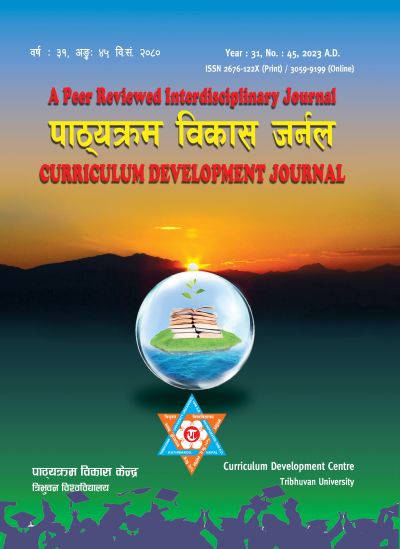Growth and Phenology of Hybrid Maize as Influenced by Different Levels of Nitrogen and Plant Population
DOI:
https://doi.org/10.3126/cdj.v31i45.68976Keywords:
Maize, nitrogen, plant population, growth stagesAbstract
Agronomic measurements like proper planting geometry and fertilizer application increase physiological characteristics and ultimately the grain yield of maize. The experiment was laid out in a split-plot design with three replications consisting of four levels of nitrogen (0, 70, 140 and 210 kg/ha-1) as the main plot factor, and four levels of the population (55,555, 69,444, 85,470 and 1,01,010 plants ha-1) as subplot factor in the humid sub-tropical condition of Chitwan, Nepal. Different levels of nitrogen and plant population did not significantly affect the number of days to emergence (VE), appearance of knee high (V6), milking and daugh stage of hybrid maize. However, the timing of tasseling and silking in winter maize hybrid crops was notably influenced by plant population levels. Higher level of nitrogen 210kgNha-1 significantly delayed physiological maturity as compared to the control. The height of plants recorded at harvest with the application of 210 kgNha-1 and 140 kgNha-1 were similar to each other, but significantly taller than the control at 30 to 90DAS of hybrid maize. Similarly, Plant height remained largely unaffected by varying plant populations during most growth stages, except at the pre-milking stage (90DAS), where a higher density of 101 thousand plants ha-1 (192.5cm) significantly increased height compared to 55 (163.0 cm) and 69 (165.0cm) thousand plants ha-1. The values of the total dry matter accumulated in maize plants with 70,140 & 210kgNha-1 at 75, 120 & 150 DAS were significantly higher in comparison to the control. Similarly, the total dry matter accumulated in maize plants were significantly higher with 101 thousand plants ha-1 in comparison to 69 and 55 thousand plants ha-1, but remained at par with 85 thousand plants ha-1 at silking (75DAS) and physiological maturity (150DAS) stages. the values of LAI obtained with the application of 140kgNha-1 were significantly higher as compared to 210, 70 and 0 kgNha-1 which remained at par with 210 and 70kgNha-1 except in 45 (after the knee-high stage) &60 (before tasselling stage) DAS and 90 (after silking stage) & 105 (before milking stage) DAS, respectively. Contrastingly, plant population levels did not significantly impact leafarea index in this experiment, except at 60DAS.
Downloads
Downloads
Published
How to Cite
Issue
Section
License
© Curriculum Development Centre, Tribhuvan University

